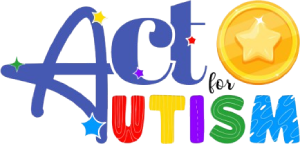Reflex Integration Therapy for Speech & Brain Development in Autism
Unlocking Brain Potential Through Primitive Reflex Integration


What is Reflex Integration Therapy?
Reflex Integration Therapy is a neuroscience-backed therapeutic approach that focuses on identifying and integrating retained primitive reflexes — automatic movements present in early infancy that should naturally fade as the brain matures. When these reflexes remain active beyond the appropriate age, they can interfere with the development of speech, language, motor coordination, emotional regulation, and learning.
Retained reflexes are commonly seen in children with Autism Spectrum Disorder (ASD), ADHD, speech delays, and sensory processing challenges.
Why Reflex Integration Matters for Brain Development
During infancy, primitive reflexes like the Moro, ATNR, TLR, and STNR support early survival and neurological wiring. But if these reflexes are not integrated, they can create neurological “roadblocks” that hinder higher-level functions such as:
- Speech and language acquisition
- Gross and fine motor coordination
- Attention and focus
- Postural control and balance
- Emotional regulation
Reflex Integration Therapy uses specific movement patterns and sensory-motor exercises to help the brain rewire and organize itself, improving the child’s ability to communicate, learn, and function in daily life.
How Reflex Integration Therapy Helps in Speech and Language Development
Many parents ask:
“Can Reflex Integration Therapy help my child speak?”
The answer is: Yes — and here’s how.
Brain-Body Connection
Speech is not just about the mouth. It involves a complex interaction between the brain, body, and sensory systems. Retained reflexes like the Rooting, Palmar, or ATNR reflex can directly interfere with:
Oral-motor coordination
Breath control and vocalization
Tongue and jaw movement
Auditory processing
Attention to verbal cues
Brainstem to Cortex Development
When reflexes are not integrated, the brain remains “stuck” in lower brainstem functions, limiting access to the cortical areas responsible for language processing, memory, and cognitive development. Reflex integration helps release the brain from survival mode, allowing higher brain areas to take control — essential for developing expressive and receptive language.
Improved Attention and Auditory Processing
Reflex integration improves a child’s sensory registration and modulation, which enhances their ability to listen, attend, and process verbal language. This lays the foundation for joint attention, speech imitation, and language comprehension — key goals in autism therapy.
Conditions Benefited by Reflex Integration Therapy
Reflex Integration is highly effective for children with:
- Autism Spectrum Disorder (ASD)
- Speech Delay or Childhood Apraxia of Speech
- ADHD or Attention Difficulties
- Sensory Processing Disorder
- Learning Disabilities
- Emotional Dysregulation
- Poor Posture and Motor Planning Issues
Scientific Basis of Reflex Integration
Research in neuroplasticity, motor-sensory integration, and developmental neuroscience shows that movement-based reflex integration helps:
- Strengthen neural connections between sensory and motor systems
- Promote myelination and improve brain signaling
- Enhance bilateral coordination and cross-hemispheric communication
- Improve speech articulation and oral-motor control
These mechanisms are especially critical for children with autism who face delays in speech, motor skills, and social communication.
Why Choose Reflex Integration Therapy for Autism?
Holistic Approach
Supports Speech Therapy
Safe, Non-Invasive, and Evidence-Informed
Combined with Other Therapies for Maximum Results
Reflex Integration Therapy works synergistically with:
- Speech and Language Therapy
- Oral Placement Therapy
- Occupational Therapy
- Sensory Integration Therapy
- ABA and Verbal Behavior Therapy
- Brain Gym and Movement Therapy
Together, these therapies build a strong neurological and functional base for children to thrive in communication, academics, and social life.


